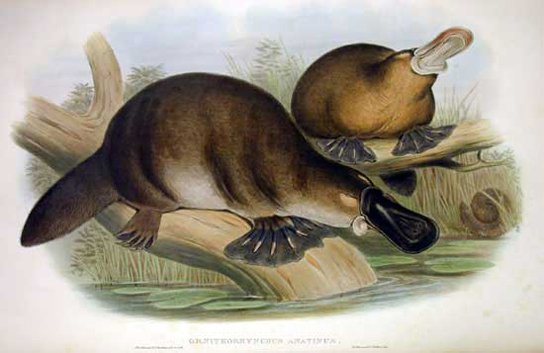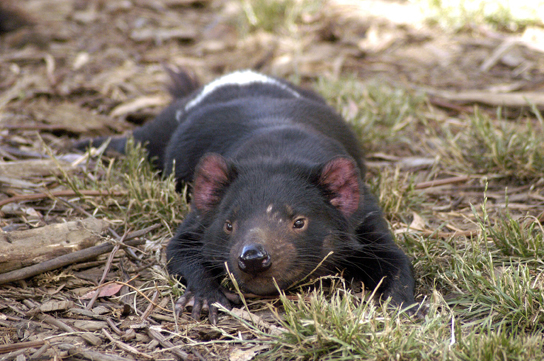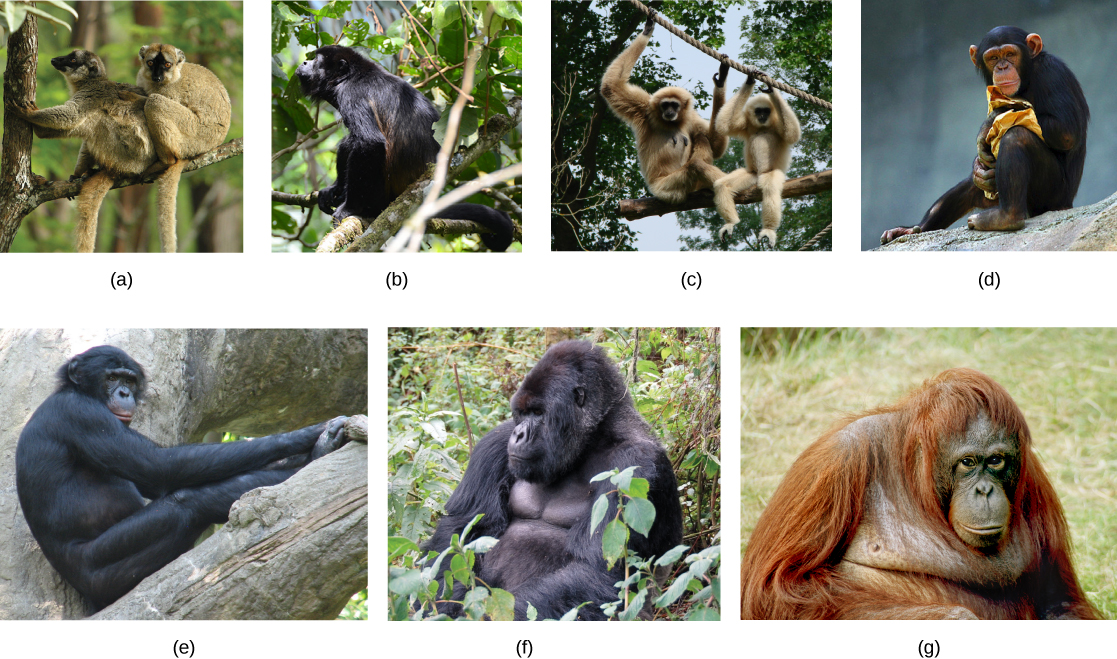| << Chapter < Page | Chapter >> Page > |
Mammals, like birds, possess a four-chambered heart. Mammals also have a specialized group of cardiac fibers located in the walls of their right atrium called the sinoatrial node, or pacemaker, which determines the rate at which the heart beats. Mammalian erythrocytes (red blood cells) do not have nuclei, whereas the erythrocytes of other vertebrates are nucleated.
The eutherians, or placental mammals, and the marsupials together comprise the clade of therian mammals. Monotremes, or metatherians, form their sister clade.
There are three living species of monotremes : the platypus and two species of echidnas, or spiny anteaters. ( [link] ). The platypus and one species of echidna are found in Australia, and the other species of echidna is found in New Guinea. Monotremes are unique among mammals as they lay eggs, rather than giving birth to live young. The shells of their eggs are not like the hard shells of birds, but are a leathery shell, similar to the shells of reptile eggs. Monotremes have no teeth.


Marsupials are found primarily in Australia, though the opossum is found in North America. Australian marsupials include the kangaroo, koala, bandicoot, Tasmanian devil ( [link] ), and several other species. Most species of marsupials possess a pouch in which the very premature young reside after birth, receiving milk and continuing to develop. Marsupials differ from eutherians in that there is a less complex placental connection: The young are born at an extremely early age and latch onto the nipple within the pouch.

Placental mammals are the most widespread of the mammals, occurring throughout the world. There are 18 to 20 orders of placental mammals. Some examples are Insectivora, the insect eaters; Edentata, the toothless anteaters; Rodentia, the rodents; Cetacea, the aquatic mammals including whales; Carnivora, carnivorous mammals including dogs, cats, and bears; and Primates, which includes humans. Eutherian mammals are sometimes called placental mammals because all species possess a complex placenta that connects a fetus to the mother, allowing for gas, fluid, and nutrient exchange.
Order Primates of class Mammalia includes lemurs, tarsiers, monkeys, and the apes, which include humans. Non-human primates live primarily in tropical or subtropical regions of South America, Africa, and Asia. They range in size from the mouse lemur at 30 grams (1 ounce) to the mountain gorilla at 200 kilograms (441 pounds). The characteristics and evolution of primates are of particular interest to us as they allow us to understand the evolution of our own species.
All primate species have adaptations for climbing trees, as they all descended from tree-dwellers, although not all species are arboreal. This arboreal heritage of primates resulted in hands and feet that are adapted for brachiation , or climbing and swinging through trees. These adaptations include, but are not limited to 1) a rotating shoulder joint, 2) a big toe that is widely separated from the other toes and thumbs that are widely separated from fingers (except humans), which allow for gripping branches, and 3) stereoscopic vision , two overlapping visual fields, which allows for the depth perception necessary to gauge distance. Other characteristics of primates are brains that are larger than those of many other mammals, claws that have been modified into flattened nails, typically only one offspring per pregnancy, and a trend toward holding the body upright.
Order Primates is divided into two groups: prosimians and anthropoids. Prosimians include the bush babies of Africa, the lemurs of Madagascar, and the lorises, pottos, and tarsiers of Southeast Asia. Anthropoids include monkeys, lesser apes, and great apes ( [link] ). In general, prosimians tend to be nocturnal, smaller in size than anthropoids, and have relatively smaller brains compared to anthropoids.

Mammals in general are vertebrates that possess hair and mammary glands. The mammalian integument includes various secretory glands, including sebaceous glands, eccrine glands, apocrine glands, and mammary glands. Mammals are synapsids, meaning that they have a single opening in the skull. A key characteristic of synapsids is endothermy rather than the ectothermy seen in other vertebrates. Mammals probably evolved from therapsids in the late Triassic period, as the earliest known mammal fossils are from the early Jurassic period. There are three groups of mammals living today: monotremes, marsupials, and eutherians. Monotremes are unique among mammals as they lay eggs, rather than giving birth to young. Eutherian mammals are sometimes called placental mammals, because all species possess a complex placenta that connects a fetus to the mother, allowing for gas, fluid, and nutrient exchange.

Notification Switch
Would you like to follow the 'Bi 101 for lbcc ilearn campus' conversation and receive update notifications?